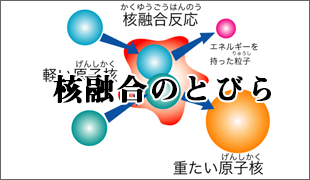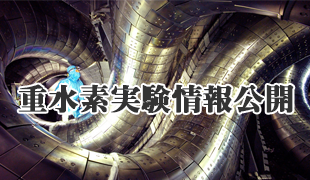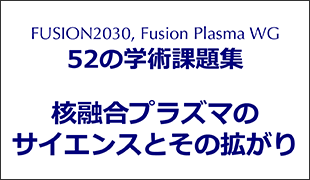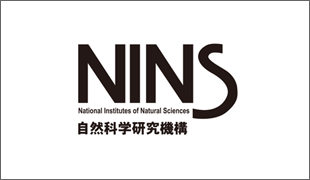More than 30 research groups around the world are racing to commercialize fusion, seen as the “perfect power” source as the planet shifts away from the CO2-emitting fossil fuels that are contributing heavily to global heating.
An innovative nuclear fusion technology that uses no radioactive materials and is calculated capable of “powering the planet for more than 100,000 years”, has been successfully piloted by a US-Japanese team of researchers.
The Large Helical Device (LHD) is the world's largest superconducting plasma confinement device and employs a heliotron magnetic configuration. The objectives are to conduct academic research on the confinement of steady-state/high-temperature plasma from the viewpoint of developing the helical-type fusion reactor.
In the LHD deuterium plasma experiment in 2020, we succeeded in generating a plasma with both electron and ion temperatures reaching 100 million degrees. Until now, plasmas with an ion temperature of 100 million degrees or higher have had a low electron temperature, and with this success, we were able to establish a method to produce plasmas that reach 100 million degrees. With this success, LHD research has entered a new stage. - a spokesperson for NIFS.
Physics experiments on plasma turbulence and instability have provided important insights for the development of control methods for turbulence and instability in future fusion plasmas. Turbulence and sudden instabilities are considered to be deeply related not only to fusion plasmas but also to various phenomena occurring in space and on the earth. We are planning to promote such interdisciplinary research in the LHD.
California-based TAE Technologies, working with Japan’s National Institute for Fusion Science (NIFS), have completed the first tests of a hydrogen-boron fuel cycle in magnetically-confined plasma, which could generate cleaner, lower-cost energy that is produced by the more common deuterium-tritium (D-T) fusion process.
Fusion reactors are expected to be a promising energy source that does not produce greenhouse gases in a future sustainable society. Their fuels are deuterium and tritium, but in recent years, research toward cleaner fusion reactors has been active, especially among venture capital companies from around the world. Cleaner fusion reactors will use advanced fusion fuels, which are more difficult to fuse than deuterium and tritium ones, but do not produce neutrons. On 1 September 2021, the NIFS signed an agreement with TAE Technologies, one of the oldest fusion start-up companies in the United States of America, to start joint research using advanced fusion fuels, hydrogen, and boron-11. Until now, no proton and boron-11 fusion reactions have been demonstrated in magnetic confinement devices. If such a reaction can be demonstrated in the LHD, this would be a major step forward in research toward the realization of a fusion reactor using advanced fusion fuels.
A research group led by Associate Professor Kunihiro Ogawa and Professor Satoru Ohdachi, in collaboration with TAE Technologies, has demonstrated a fusion reaction between proton and boron-11 in the LHD. A thermal fusion reactor using hydrogen and boron-11 fuel is considered to be difficult to create because an extremely high-temperature plasma is required, compared to deuterium and tritium fuels. However, a hydrogen and boron-11 reactor is possible using energetic hydrogen beams, and the research for this has been led by TAE Technologies. To efficiently cause a fusion reaction, the protons must collide with boron-11 at a speed of more than 15,000,000 km/h. The LHD is equipped with the world's only operational hydrogen beam injectors that can force hydrogen into plasma at speeds exceeding 15,000,000 km/h and a powder dropper that can also inject boron into it. These enable fusion reactions between protons and boron11 in a magnetically confined plasma.
“This experiment offers us a wealth of data to work with and shows that hydrogen boron has a place in utility-scale fusion power. We know we can solve the physics challenge at hand and deliver a transformational new form of carbon-free energy to the world that relies on this non-radioactive, abundant fuel,” said Michl Binderbauer, CEO of TAE Technologies.
A spokesperson for NIFS, which formed its partnership with TAE in 2021, noted: “Hydrogen-boron… enables the concept of cleaner fusion reactors – this achievement is a big first step towards the realization of a fusion reactor using advanced fusion fuel.”
The experiments were carried out in NIFS’ large helical device, known as a stellarator, but TAE is developing a so-called field-reversed configuration reactor that promises “a variety of benefits over stellarator and tokamak reactors, including having a compact footprint and more efficient magnetic confinement that will yield up to 100 times more power output.
Boron was injected into the plasma using a powder dropper, and energetic hydrogen ions were also injected. The proton and boron-11 reaction produced three energetic helium ions, some of which reached the alpha particle detector. The signal was recorded by a high-speed waveform recorder.
“Inventing fusion reactors that produce net energy is one thing, delivering it as a reliable, grid-ready source of electricity is another. By choosing to pursue hydrogen-boron as a fuel cycle, TAE has anticipated the true demands of commercial, daily use of fusion energy.
“Most fusion efforts around the world are focused on combining DT hydrogen isotopes to use as fuel, and the donut-shaped tokamak machines commonly used are limited to DT fuel. Unlike those efforts, [our] design uses an advanced accelerator beam-driven field-reversed configuration that is versatile, and can accommodate all available fusion fuel cycles.”
This fuel-agnostic reactor design, which features a sensor able to detect helium nuclei alpha particles– the only emissions from H2-boron fusion, is expected to make it possible for TAE to license its technology “on the way to its ultimate goal” of connecting the first hydrogen-boron fusion power plant to the grid in the 2030s.
TAE highlighted that it had built five “national laboratory-scale” devices – with which it had generated and confined fusion plasma “more than 140,000 times” – and is currently building two further machines, dubbed Copernicus and Da Vinci, with a view to “demonstrating net energy and deliver power to the grid, respectively”.
US researchers at the US National Ignition Facility in California in December hailed fusion experiments that had achieved “ignition gain or energy gain”, where the energy released was greater than what was pumped in the high-powered lasers used in the fusion process.















No comments:
Post a Comment